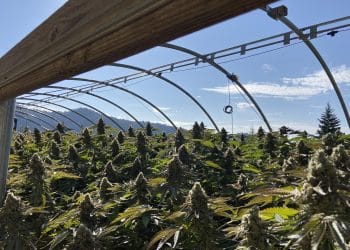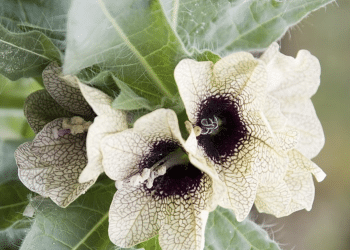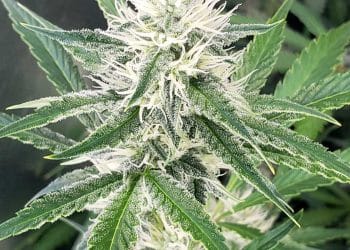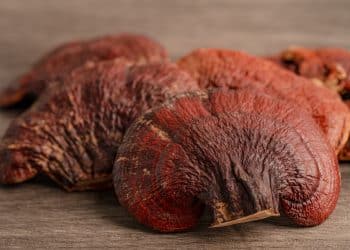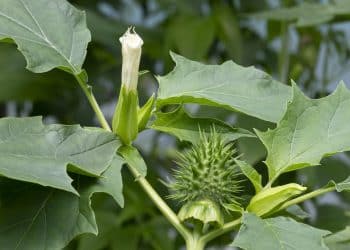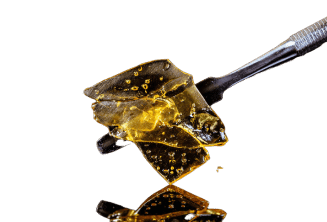Industrial hemp plants need some type of processing for consumers to fully enjoy their many benefits, be it drying and curing, or extraction and product refinement. It, thus, behooves the industry to choose processing methods that maximize and even enhance the characteristics of freshly cut plants.
In a recent study, researchers took biomass samples from four types of cannabidiol (CBD)-hemp plants, including Cherry Wine, Red Bordeaux, Umpqua, and T&H, and subjected them to steam distillation. [1] Before discussing the results, it’s important to note that the dominant cannabinoids in freshly harvested plants are primarily in acid form. For example, tetrahydrocannabinol (THC) and CBD, typically the two most sought-after cannabinoids, are actually tetrahydrocannabinolic acid (THCA) and cannabidiolic acid (CBDA). To become THC and CBD, decarboxylation — the process that occurs when a carboxyl group is removed from the acid through the application of heat — must occur.
The essential oil yield varied between plants, with Red Bordeaux and Cherry Wine producing the highest yields at 1.6 and 1.85%, respectively. Umpqua was third with 0.72%, and T&H produced only 0.37%, most likely due to the fact that the T&H biomass was chopped up and included all of the plant, containing stems, leaves, and flowers. Each of the essential oils had its unique cannabinoid and terpene profile, with caryophyllene, limonene, selina-3,7(11)-diene, and myrcene being the most represented terpenes. [1] T&H contained a whopping 30% of caryophyllene, and trans-α-bergamotene also was higher in T&H compared to the other three cultivars. Interestingly, α-humulene, α-bulnesene, (E)-α-bisabolene, caryophyllene oxide, and epi-α-bisabolol were also higher in the essential oil extracted from T&H compared to the other plants. Other interesting finds were higher levels of guaiol, 10-epi-γ-eudesmol, linalool, and bulnesol in Umpqua; (E)-β-ocimene and γ-elemene in both Cherry Wine and Red Bordeaux; α-guaiene in Umpqua and T&H; and β-bisabolene in all cultivars.
Minor cannabinoids of interest detected in the essential oils, including cannabicitran and cannabidivarin (CBDV) in the oil extracted from Umpqua, and CBC in Cherry Wine and Red Bordeaux.
The effect of steam distillation on the cannabinoid content of the post-distillation biomass was the true nugget of this study. Researchers found that the cannabinoid content in the four biomass samples increased, and these cannabinoids were in their activated forms, meaning decarboxylated. CBDA transformed to CBD, cannabichromenic acid (CBCA) converted to cannabichromene (CBC), cannabigerolic acid CBGA decarboxylated to cannabigerol (CBG), and cannabidivaric acid (CBDVA) to CBDV.
When compared with biomass that was not distilled, the results were more than significant. Distilled Red Bordeaux biomass had 3.4 times more CBD than non-distilled; Cherry Wine was 5.6 times higher in CBD; Umpqua was 9 times higher; and T&H distilled biomass was 6-fold higher in CBD.
The distillation of the biomass prior to extraction enables valuable terpenes to be removed prior to subsequent processing steps where they may be lost. Additionally, extraction methods like supercritical carbon dioxide may require some extra time to pull out the more polar acidic cannabinoids compared to their neutral counterparts, which may have the concomitant effect of pulling out more undesirable constituents like waxes. Therefore, some extractors choose to decarb the biomass first. If that strategy is adopted, it makes sense to capture terpenes in the process.
What this study demonstrates is the ease at which significant valuation can be accomplished on basic biomass, one of the most necessary resources in the cannabis industry.
Image Source: https://www.maxpixel.net/Chemistry-Distillation-Science-Osmosis-2028602
Reference:
[1] Zheljazkov VD, Maggi F. Valorization of CBD-hemp through distillation to provide essential oil and improved cannabinoids profile. Sci Rep. 2021;11(1):19890. [journal impact factor = 5.133; times cited = 0]
